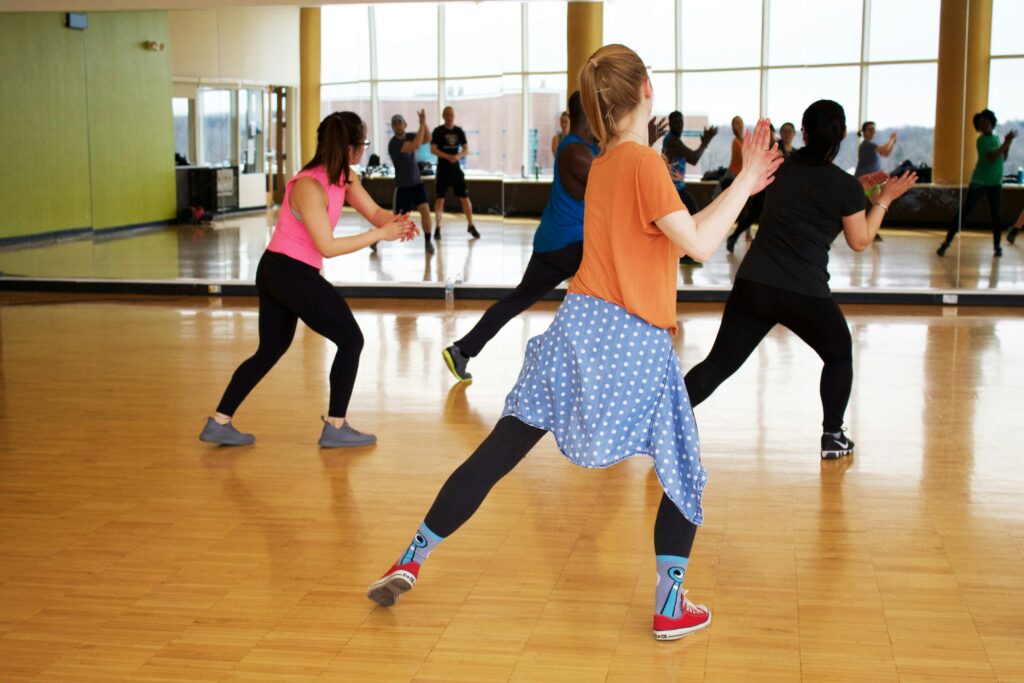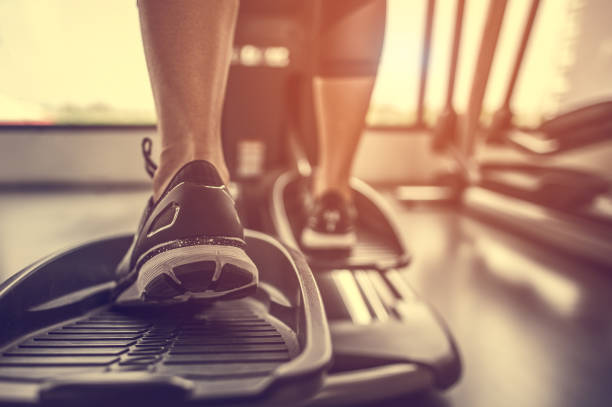Table of Contents
ToggleIntroduction for Top 10 Ultimate Guide to Cardio Exercise
Here is the introduction for Top 10 Ultimate Guide to Cardio Exercise for Optimal Health Cardiovascular exercise is a cornerstone of a healthy lifestyle, offering a multitude of benefits that extend beyond the gym. Whether you’re a fitness enthusiast or just starting your journey towards better health, engaging in regular cardio workouts can significantly enhance your physical well-being, mental clarity, and overall quality of life. for Top 10 Ultimate Guide to Cardio Exercise This ultimate guide delves into the top 10 essential aspects of cardio exercise, providing you with a comprehensive understanding of how to maximize the benefits of your workouts.
From boosting heart health and improving lung capacity to aiding in weight management and reducing stress, cardio exercise is a powerful tool in your health arsenal. Top 10 Ultimate Guide to Cardio ExerciseThis guide will cover everything you need to know to get started, including the different types of cardio exercises, their specific benefits, and how to effectively incorporate them into your daily routine. Top 10 Ultimate Guide to Cardio Exercise Whether you prefer running, cycling, swimming, or aerobics, we’ll explore the best practices for each type of exercise to ensure you’re optimizing your results.
1. Understanding Cardio Exercise
Cardiovascular exercise, often referred to as cardio, includes any activity that increases your heart rate and promotes blood circulation throughout your body. This type of exercise is essential for maintaining heart health and overall fitness. Cardio exercise can vary widely in terms of intensity, duration, and format, making it accessible to people of all fitness levels.
Cardio workouts generally fall into two main categories: aerobic and anaerobic. Aerobic exercises are those that improve the efficiency of your cardiovascular system and include activities such as running, cycling, swimming and walking. Top 10 Ultimate Guide to Cardio Exercise These exercises are characterized by sustained effort over extended periods of time, which strengthens the heart and lungs.

2. Benefits of Cardio Exercise
Cardiovascular exercise, commonly known as cardio, provides many benefits that contribute to overall health and well-being. Engaging in regular cardio activities can lead to improved physical and mental health outcomes:
- Heart Health: Cardio exercise strengthens the heart muscle, improving its efficiency and circulation. It reduces the risk of heart disease and helps maintain healthy blood pressure levels.
- Weight Management: Regular cardio helps burn calories, which are essential for weight loss and maintenance. It increases the metabolic rate, aiding in overall energy expenditure.
- Increased lung capacity: Cardio exercise increases lung function by improving oxygen intake and circulation, which is beneficial for respiratory health.
- Mental Wellbeing: Exercise triggers the release of endorphins, often referred to as “feel-good” hormones, which can reduce stress, anxiety and depression.
- Improved Sleep: Regular physical activity can help achieve better sleep quality and duration, promoting overall well-being.
- Lower Risk of Chronic Diseases: Cardio exercise is associated with a lower risk of developing chronic conditions such as type 2 diabetes, metabolic syndrome, and some cancers.
- Enhanced Immune Function: Moderate-intensity cardio can boost the immune system, improving the body’s ability to fight disease.
Top 10 Ultimate Guide to Cardio Exercise Engaging in regular cardio exercise improves not only physical fitness but also mental health, contributing to a better quality of life.
3. Types of Cardio Exercises
Cardiovascular exercise, commonly known as cardio, includes a variety of activities that increase heart rate, improve cardiovascular endurance, and promote overall health. for Top 10 Ultimate Guide to Cardio Exercise There are many types of cardio exercises, each with unique characteristics and benefits. Here is a detailed look at some popular types:
4. Running
for Top 10 Ultimate Guide to Cardio Exercise Running is a high impact cardio exercise that significantly improves heart health. It engages the muscles of the lower body, including the legs, hips and core, while also increasing cardiovascular endurance. Running can be done outdoors or on a treadmill and can vary in intensity, from a light jog to a sprint. It is effective in burning calories and improving bone density.

Benefits of Running
- Cardiovascular Health: Running is an effective cardiovascular exercise that strengthens the heart, improves circulation, and increases lung capacity.
- Calorie Burning: Running is a high calorie burning activity that can help with weight management and fat loss.
- Mental health: Running has been shown to release endorphins in the brain, chemicals that act as natural painkillers and mood elevators, helping to reduce stress, anxiety and depression.
- Bone health: Like weight-bearing exercise, running helps increase bone density, which can reduce the risk of osteoporosis.
- Muscle toning: Regular running helps tone muscles, especially in the legs, glutes and core, contributing to overall strength and fitness.
- mproved sleep:I Regular physical activity, including running, is linked to better sleep quality and duration.
- Social interaction: Running can also provide social benefits when done in group settings, such as clubs or races, fostering a sense of community and motivation.
- Mental clarity and cognitive function: Physical activity, including running, is associated with improved cognitive function and mental clarity.
4.cycling
for Top 10 Ultimate Guide to Cardio ExerciseCycling Top 10 Ultimate Guide to Cardio Exercise, whether on a stationary bike or a road bike, is low-impact exercise that’s easy on the joints. It effectively builds cardiovascular fitness, strengthens the legs, and can be tailored to different intensity levels. Cycling also helps with weight management and can be a sustainable option for people with joint concerns.

Benefits of Cycling
- Cardiovascular ness: FitCycling is an excellent cardiovascular exercise that increases heart rate, improves heart health, and increases lung capacity.
- Calorie Burning: Cycling can help burn calories and fat, making it an effective activity for weight loss and weight management.
- Muscle toning: Regular cycling targets the leg muscles, including the quadriceps, hamstrings, glutes and calves, helping to build strength and endurance.
- Low-impact exercise: Cycling is gentler on the joints than high-impact activities like running, making it ideal for people with joint concerns or those recovering from injuries.
- Improved coordination: Cycling requires balance and coordination, which can improve these skills over time.
- Bone Health: While cycling is not a weight-bearing exercise, it still provides benefits for bone health by stimulating the bones through regular physical activity.
5. Swimming
for Top 10 Ultimate Guide to Cardio Exercise Swimming is a full-body, low-impact exercise that improves cardiovascular fitness while also increasing muscle tone and flexibility. It involves the use of all major muscle groups, providing a comprehensive workout that is gentle on the joints. Swimming is also an effective way to cool down in hot weather Top 10 Ultimate Guide to Cardio Exercise

Benefits of Swimming
- Full-Body Workout: Swimming engages nearly all major muscle groups, including arms, legs, core, and back, providing a comprehensive workout that increases muscle tone and strength.
- Low-impact exercise: Swimming is gentle on the joints and is an ideal exercise for people recovering from arthritis or injuries. Water bouncing reduces stress on the body, making it a safe option for those with joint problems.
- Cardiovascular Fitness: Swimming is an excellent cardiovascular exercise that improves heart and lung capacity, boosting heart health.
- Calorie burning: Depending on the intensity and duration of the activity, swimming can burn a significant number of calories, making it effective for weight loss and weight management.
- Flexibility and Mobility: Swimming involves a wide range of motion, which can improve flexibility and mobility in joints and muscles.
- Resistance training: Water provides natural resistance, which helps build muscle strength and endurance without the need for weights or machines.
6. Jumping Rope
for Top 10 Ultimate Guide to Cardio Exercise Swimming is a full-body, low-impact exercise that improves cardiovascular fitness while also increasing muscle tone and flexibility. It involves the use of all major muscle groups, providing a comprehensive workout that is gentle on the joints. Swimming is also an effective way to cool down in hot weather

Benefits of Jumping Rope
- Cardiovascular Fitness: Jumping rope is an excellent cardiovascular workout that increases heart rate, improves heart health, and increases lung capacity.
- Calorie burning: This high-intensity exercise is effective for burning calories, which can aid in weight loss and weight management.
- Muscle toning: Jumping rope engages different muscle groups, especially in the legs, core, and arms, contributing to muscle toning and strength development.
- Improved coordination: The rhythm and timing required in jumping rope can improve hand-eye coordination and agility.
- Bone Health Jumping rope is a weight-bearing exercise that helps improve bone density and strength, reducing the risk of osteoporosis.
- Balance and Stability: Jumping rope requires good balance and coordination, which can improve these physical skills over time.
7. Rowing
for Top 10 Ultimate Guide to Cardio Exercise Rowing, whether on a rowing machine or in a boat, is an excellent cardiovascular workout that engages multiple muscle groups, including the back, shoulders, arms, and legs. It provides a full-body workout, improves cardiovascular health, and helps in building endurance.

Benifits of Rowing
- Full-body workout: Rowing is a comprehensive exercise that engages muscles throughout the body. The rowing stroke includes the legs, back, arms and core, providing a well-rounded workout.
- Cardiovascular Health: Rowing is an excellent cardiovascular exercise that can improve heart health by increasing heart rate and lung capacity.
- Calorie Burning: Rowing is a high calorie burning exercise, making it effective for weight loss and fitness maintenance.
- Low-impact exercise: Compared to many other forms of high-impact exercise, such as running, it is gentler on the joints, making it suitable for people with joint concerns or those recovering from injuries.
- Muscle strength and tone: Rowing helps strengthen the muscles of the back, arms, legs and core, contributing to muscle tone and endurance.
- mproved posture and core strength:I Rowing motion requires core stability and strength, which can help improve posture and core strength over time.
8. dance
for Top 10 Ultimate Guide to Cardio Exercise Dance is an excellent form of cardiovascular exercise, which helps improve heart health by increasing heart rate and blood circulation. It also burns calories, which can help with weight management and fat loss. Dancing engages many muscle groups, helping to tone muscles and increase strength, especially in the legs, core and arms. It also improves flexibility, balance and coordination, increasing overall physical fitness.

Benefits of Dancing
- Cardiovascular Fitness: Dance is an excellent cardiovascular exercise that can increase heart rate, improve heart health and increase overall stamina.
- Calorie Burning: Depending on the style and intensity, dance can be an effective way to burn calories, which helps with weight management and fat loss.
- Muscle toning and strengthening: Dancing engages different muscle groups, including legs, arms, core, and back, helping to tone and strengthen muscles.
- Flexibility: Regular dancing can improve flexibility and range of motion in the joints, which is beneficial for overall physical fitness.
- Balance and coordination: Dance routines often require precise movements and balance, which can improve coordination and balance over time.
- Posture: Dance encourages proper posture and body alignment, which can benefit posture in everyday life.
9. Walking
for Top 10 Ultimate Guide to Cardio Exercise Regular walking can improve heart health by increasing heart rate and blood circulation, which can reduce the risk of heart disease. It also helps in weight management by burning calories, weight loss or maintenance. Walking strengthens muscles, especially in the legs and core, and can improve joint mobility and flexibility.

Benefits of Walking
- Improves cardiovascular health: Regular walking can strengthen the heart, improve circulation, and reduce the risk of heart disease.
- Aids in weight management: Walking helps burn calories, which when combined with a healthy diet can contribute to weight loss and maintenance.
- Strengthens the muscles: Walking engages the muscles of the legs, hips and lower back, which helps tone and strengthen these areas.
- Improves joint health: Regular walking can help maintain joint health and mobility, reducing the risk of arthritis and joint pain.
- Boosts immune function: Moderate-intensity exercise, such as walking, has been shown to boost immune function, potentially reducing the frequency of illnesses.
- Improves bone health: Walking, especially when done at a brisk pace, can improve bone density and reduce the risk of osteoporosis.
10. Consulting Healthcare Providers
Consultation with health care providers is an important component in maintaining and improving overall health. Health care providers, such as doctors, nurses, specialists, and other medical professionals, play an important role in the diagnosis, treatment, and prevention of diseases. Top 10 Ultimate Guide to Cardio Exercise Here are some key reasons why consultation with healthcare providers is important:
1. Preventive Care
Health care providers provide preventive services that can help detect and prevent health problems before they become serious. These include vaccinations, screenings, and lifestyle counseling to reduce the risk of chronic diseases.
2. accurate diagnosis
Providers are trained to accurately diagnose a wide range of health conditions. Early and accurate diagnosis is important for effective treatment and management of health problems.
3. Personalized Treatment Plan
Healthcare providers create individualized treatment plans based on a person’s health needs, medical history, and lifestyle. This ensures that the treatment is effective and tailored to the patient’s specific condition.
4. Management of chronic conditions
For people with chronic conditions such as diabetes, high blood pressure, or asthma, ongoing management by healthcare providers is essential to prevent complications and improve quality of life.
5. Medical Expertise
Health care providers have the expertise to advise on complex medical issues, including the benefits and risks of various treatments and medications.
6. Medication Management
Providers help prescribe appropriate medications, adjust dosages as needed, and monitor side effects, to ensure medications are both safe and effective.
7. Mental Health Support
Mental health is an important aspect of overall well-being. Health care providers can offer support for mental health problems, including therapy, counseling, and medication management.
8. Follow-up Care
Regular follow-up visits with health care providers are important to monitor health progress, make necessary adjustments to treatment plans, and ensure continuity of care.
9. emergency care
In an emergency, health care providers are required to provide immediate medical care, stabilize patients, and initiate necessary treatment.
10. Health Education
Providers educate patients about their health conditions, treatment options, and preventive measures, empowering them to make informed decisions about their health.
Regular consultation with health care providers ensures that health concerns are addressed promptly and appropriately.Top 10 Ultimate Guide to Cardio Exercise It is advisable to have a primary care provider who can coordinate care and provide ongoing health management. This relationship is fundamental to achieving and maintaining optimal health.
- You might interested in these post also
- Top 10 Transformative Benefits of Organic food

